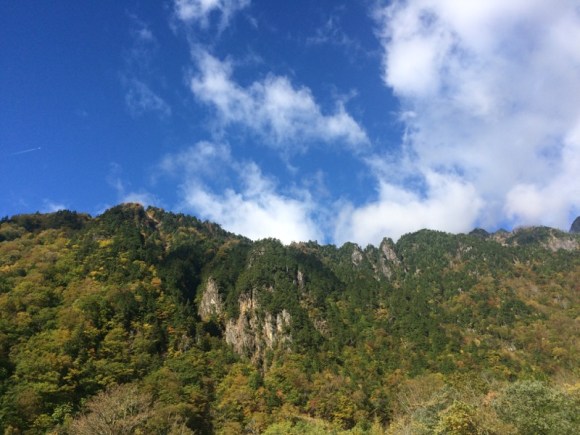On our third day we drove one hour to the East from Takayama and found ourselves in a valley that reminded me of Switzerland. The first western explorers, after the Meiji opening of Japan, found the mountains of the Hida range that divide Gifu and Nagano prefecture to be utterly similar to the European Alps and decided to name them Japanese Alps. The name stuck with the Japanese people and now the the Hida, Kiso and Akaishi mountains are all officially called Japanese Alps.
We arrived at the Shinhotaka ropeway and parked our car before nine in the morning. We were almost alone, surrounded by nature and the sound of the water hiting the rocky river. But suddenly, three buses filled with old Japanese people (probably retired) arrived and we found ourselves queuing in order to ride the Shinhotaka Ropeway. I’ll never get used to queuing in Japan, there always queues even in remote places where you would not expect it 🙂
The views from the top of the Shinhotaka Ropeway are astounding, pure nature beauty. From there, we started walking up into the mountains following a beginners route called Nishihodoku (西穂独標): Shinhotaka Ropeway ― Nishiho Mountain Cottage ― Maruyama (丸山) ― Nishihodoku. There was no snow at this time of the year and it was a very easy hike that we enjoyed very much. But beware, in winter it can be a very dangerous area: more details about the difficulty of Hotaka hiking routes.




Photo of us with a Japanese Post at 2,156 meters of altitude

This is the Nishiho Mountain Cottage. There is food (Ramen!), drinks and you can spend the night here.

Photo of us at one of the summits.

























